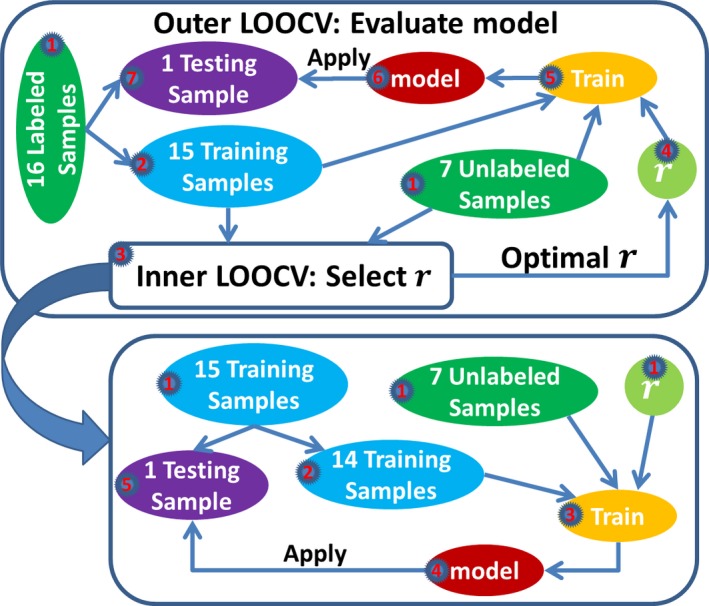Figure 2.

A flowchart for the nested LOOCV that we used to evaluate the semi‐supervised model when the parameter r was unknown before the model training. The outer LOOCV included 16 rounds of training and testing. For each round, one labeled sample was left‐out for testing, and the remaining 15 labeled samples and the seven unlabeled samples were used for training. We submitted these 22 samples to the inner LOOCV box. All the activities in the inner LOOCV box were confined to these 22 samples. The goal of the inner LOOCV box was to optimize the parameter r. Different r values, ranging from 0 to 1 and stepping by 0.1, were tried in the inner LOOCV box. Specifically, we performed a LOOCV on the 22 samples for each value of r. An inner LOOCV included 15 rounds of training and testing. For each round, one labeled sample was left‐out for testing, and the remaining 14 labeled samples and the seven unlabeled samples were used for training. The LOOCV performance was calculated based on the predictions on the 15 testing samples accumulated across the 15 rounds of testing. The r value that achieved the best LOOCV performance was selected. With the optimized parameter r, we jumped out of the inner LOOCV box and returned to the outer LOOCV box. Then we trained a model with the optimized parameter r using the seven unlabeled samples and the 15 labeled samples in the blue ellipse, and applied this model to the left‐out labeled sample for testing. Thus, we completed one round of training and testing for the outer LOOCV. This process was repeated 16 times, with each labeled sample left‐out for testing once. The predictions on those 16 testing samples were used for the evaluation of the model.
